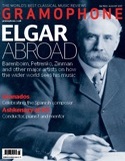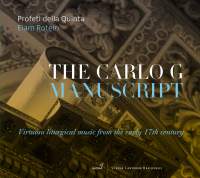Texte paru dans: / Appeared in: |
|
|
Outil de traduction (Très approximatif) |
|
|
Reviewer:
Lindsay Kemp
This music is unassuming at heart, but with its simple but mellifluously embellished harmonies it would certainly have made a satisfying addition to whatever church services it was intended for. The performances on this selection give it every chance too. Soprano Perrine Devillers and countertenor Doron Schleifer cope with the intricate vocal roulades with skill and style, as does violinist Plamena Nikitassova when she takes over a vocal line (another practice suggested in the manuscript). No less a star, though, is the organ, the stunning restored 17th-century instrument by Ategnati in the Chiesa dei Santi Eusebio e Vittore in Peglio, Italy, which is soft, fruity and wonderfully clear, whether played by Profeti della Quinta’s director Elam Rotem in the vocal works or by JörgAndreas Bötticher in the solos (not from the manuscript) that have been added to show it off further. In places intimate, in others ravishing, these pieces are a delightful find, and are beautifully performed, recorded and presented. |
|




